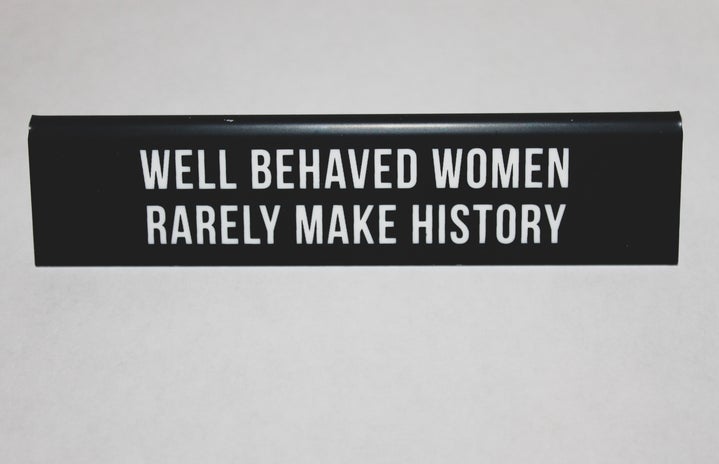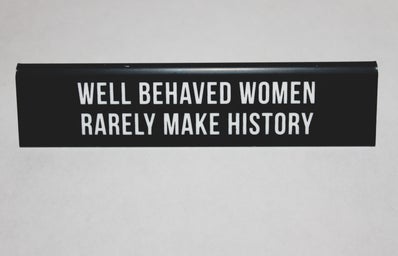For the past few weeks over various forms of social media like Facebook and Twitter, women have been posting “Me Too” in an attempt to bring attention to the widespread issue of sexual assault and harassment that is all too prevalent in our culture. While the social media campaign is successful in bringing awareness to the issue, it will not make a difference unless we are able to have men acknowledge that they are the main perpetrators of these actions and have them take responsibility for themselves.
For everyone watching the campaign unfold, it should be a wakeup call that over half the women on your friends list are posting about having experiences with sexual assault. Indeed, at this rate then it can also be presumed that over half the men on your friends list have engaged such acts. This is a problem, and it is not being attacked directly at the source. Education needs to start at an early age that teaches both men and women about their self-worth and how one gender is not superior to another. Humanist views need to be more closely followed, honoring both men and women without degrading one or the other. Historically, this type of education has been neglected and women can expect to be objectified, taken advantage of, and harassed as a result. As women, we should not have to spend time explaining to men why this behavior is inappropriate, nor should we be forced to blame ourselves when men exhibit such actions.
In an article on Total Sorority Move responding to the “Me Too” campaign, Veronica Ruckh recounts four incidents where she experienced sexual harassment involving indecent exposure, assault, rape, and abuse. She explains that each time an incident occurred, she felt the need to give the perpetrator the benefit of the doubt. As a result of society’s view on this issue, Ruckh felt the need to validate the actions of her abusers by blaming herself. The norms we have accepted in today’s culture have created this pattern. First, men are taught that it is in their nature to feel this way, some even believe all women secretly want to be treated with aggression. Next, they act on their instincts. They see an opportunity and take advantage of it, ranging from catcalling girls as they walk down the street, grabbing a girl’s butt when they’re out at a party, or the all too frequent instances of clear rape and abuse. As a result, women are taught that it is their fault. That *they* should have taken the necessary precautions to keep this from happening, when in actuality men need to be told that such behavior is severely inappropriate and will be punished. The majority of the punishing seems to be suffered by women, whether it be dealing with trauma they may face as a result of male advances and potentially the pain of seeing their abusers get off without being properly reprimanded.
The problem here is that men’s stance on this issue needs to change. Men see women as being oversensitive and most do not feel sexual assault is as big of a problem as they should feel it is. For men, it is not commonly accepted and definitely not considered “cool” to have open conversations about sexual violence. Women are the ones who talk about this issue, the “Me Too” campaign being just another testament to this behavior. Men need to start making changes in their actions, starting with even smaller steps such as calling out locker room talk. In an article on Huffington Post, Angelina Chapin suggests men start a “Me too” social media campaign where they recall a time where they caught themselves being sexist and explaining a way that they could commit to an attitude change going forward.
Above all, it is not the responsibility of abuse survivors to try and fix rape culture. The campaign has a done a great job of allowing these women to express themselves through the power of storytelling and having men face uncomfortable truths, all while allowing women to declare victim-hood without seeming weak or vulnerable. However, focusing the topic of abuse around personal stories only resolves the immediate issue by punishing individual perpetrators, not by addressing the widespread social issue. We do not need to prove the prevalence of sexual harassment with stories, it is already proven. Clearly, women can identify themselves as the victims of sexual violence, but the goal should be to have men consider themselves the aggressor. It is also important to note that this is a social media campaign, so the more “popular” stories are usually the ones that are the most horrifying and awful. This inherently sets up a perceived “competition” among abuse survivors, though that is far from the campaign’s intent. Those that partake cannot help but notice the different types of responses that they receive from sharing their stories, the more intense ones typically receiving a higher volume of supporting feedback.
“Abusers are usually abuse victims too, when do we stop punishing people and start disrupting the abuse cycle?” While there is power in this campaign, nothing will be accomplished until men take the responsibility and commit to changing the toxic aspects of our culture and address what should really be seen as “masculinity.”


